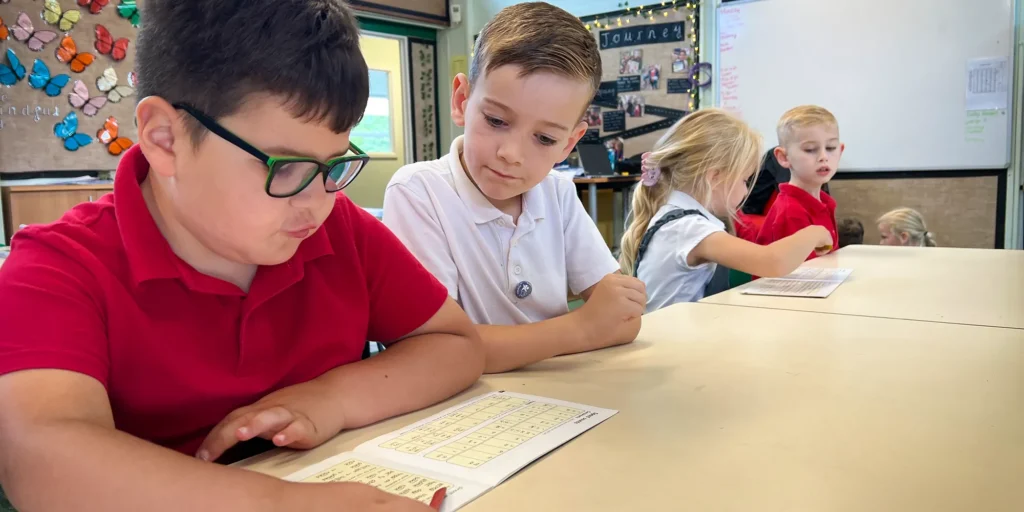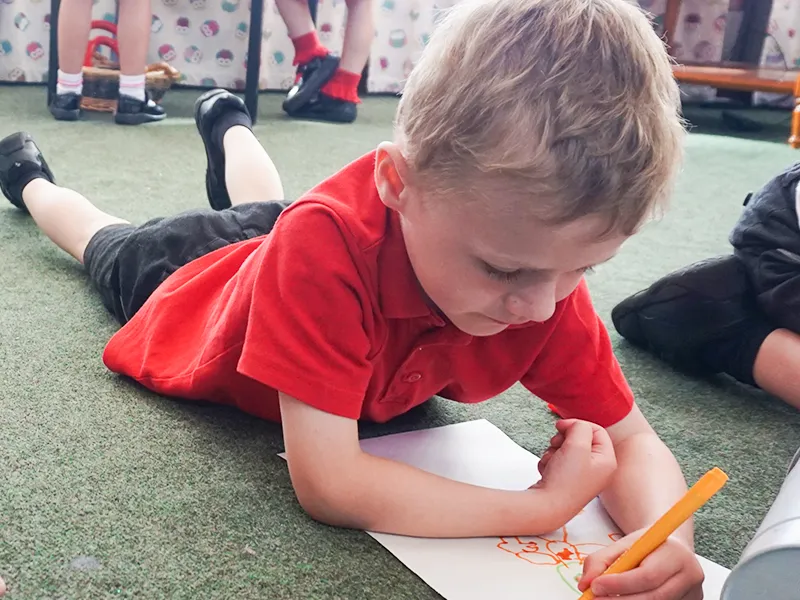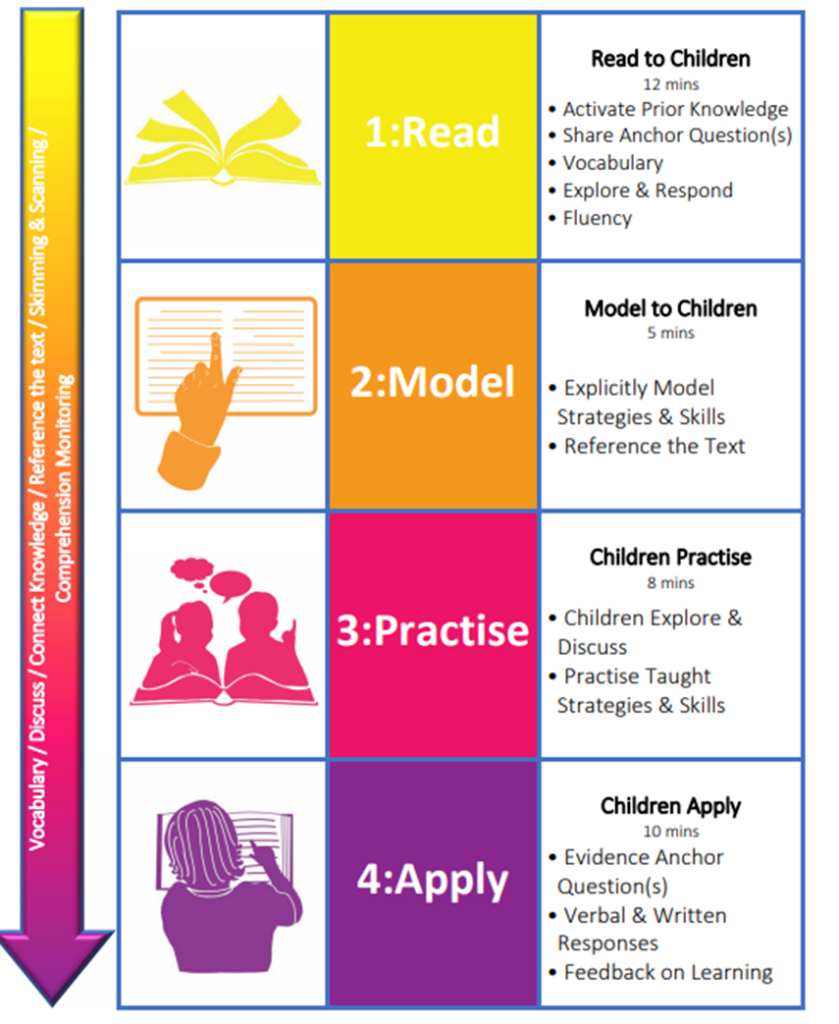Reading and Phonics
Phonics
Phonics is taught through the Read Write Inc Programme.
Phonics is a crucial component of early reading instruction, and Read Write Inc is our chosen phonics program used to teach children to read in at Ormesby Primary School. The program is centred around the belief that by understanding the relationship between sounds and letters, children can begin to decode words independently and develop a love for reading.

The Read Write Inc program is structured around three key areas: sounds, blending and reading, and writing. In the sounds portion of the program, children learn to recognise and pronounce individual sounds, beginning with simple sounds like “s” and “m” and progressing to more complex blends and digraphs. Sounds are introduced using pictures and mnemonics to help children remember them.
One of the key strengths of the Read Write Inc program is its multi-sensory approach to teaching phonics. Children learn through a variety of activities, including whole-class teaching, small-group work, partner work, and individual work. The program also incorporates movement, singing, and rhyming activities to engage children and help them remember the sounds they are learning.
Overall, the Read Write Inc program is a highly effective and engaging way to teach phonics, helping children to develop strong reading, writing, and spelling skills that will serve them well throughout their academic careers.
Lesson Structure
- Speed Sounds: The lesson begins with the teacher revising the sounds that the children have already learned, using flashcards or other visual aids to help children remember and pronounce each sound correctly.
- Word Time: Next, the teacher introduces a new sound, using visual aids such as picture cards to help children remember the sound. Children say the sound together, and then practice blending it with other sounds they have already learned using simple, decodable words.
- Reading: After Word Time, the teacher reads a text containing the new sound, while the children follow along in their own books. They may take turns reading sentences or pages from the text, or the teacher may read the text aloud while the children follow along.
- Comprehension: After the reading, the teacher asks the children a series of comprehension questions to ensure that they have understood what they have read. This helps to develop their language comprehension skills and also helps to consolidate their phonics learning.
- Writing: The lesson concludes with a writing activity, where children write sentences containing the sounds they have learned, using their phonics knowledge to help them spell the words correctly. This helps to develop their writing skills and reinforces the link between phonics and spelling.

Reading
Reading is a fundamental skill that is essential for success across all areas of the curriculum. As teachers, it is our responsibility to help our students develop the skills they need to become confident and proficient readers.
One effective way to do this is by using high quality texts alongside the Steps to Read scheme to support the teaching and learning of reading. It provides a clear teaching sequence to reading sessions that explicitly teach reading skills and strategies in a cumulative way through evidence-based approaches. These comprehensive units have been constructed so that the entire statutory curriculum for reading is covered from EYFS to Y6.
Steps to Read is a planning support for whole class Shared Reading through carefully crafted units of work. Termly units of work also help us to provide curriculum knowledge for several foundation subjects. They empower teachers to teach all aspects of word reading and comprehension through high-quality fiction, non-fiction and poetry vehicle texts.
Steps to Read Structure:
Read: Vocabulary from the vehicle text is shared and discussed first to ease ‘cognitive load’ for children. Anchor Question(s), are shared which enable children to read for a purpose. Questioning and enjoyment with the text is important here. Choral reading is featured to develop fluency, which is an important step to comprehension.
Model: Teacher models reading skills and strategies explicitly demonstrating how these are applied when ‘being’ a reader. Teacher also models the important textual evidence required to answer Anchor Question(s).
Practise: Children explore new vocabulary and through paired and table discussion, read the text again. Children Text Marking is a common feature of this step of both new vocabulary and important evidence towards the Anchor Questions.
Apply: Children demonstrate how they have internalised new reading skills, strategies and their understanding of the vehicle text. Reading evidence may well be placed in Reading Journals. Formative assessments and bespoke feedback on learning help teachers plan for subsequent learning. Step 4 enables feedback on evidence against the Anchor Question(s) and the application of taught strategies and skills.
Steps to Read: Teaching Sequence





